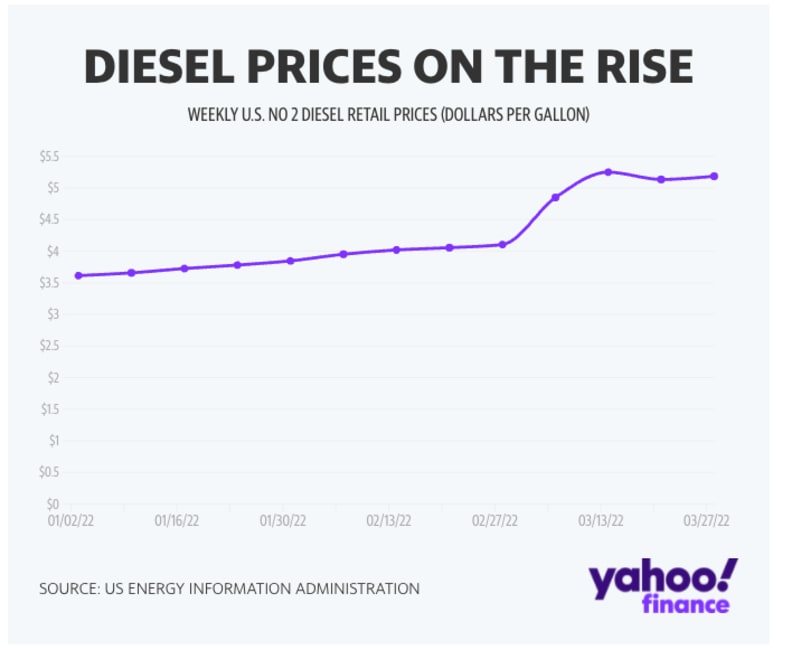Independent trucker Michael Whitaker is getting ready for his next haul of equipment from South Carolina to Arizona. Whitaker has been an owner-operator trucker since 1998. His specialty is hauling industrial machinery like construction and farming equipment.
“The diesel prices. That’s every truck driver’s main expense, it’s diesel,” says Whitaker of the recent rise in diesel prices.
Whitaker says at the beginning of the year it cost $600 or $700 to fill up his truck tank. Now, he’s paying about $1,000.
“You notice it into your pocket, oh yes,” says the Iowa-based trucker.
The price of diesel has skyrocketed since the outbreak of the Russia-Ukraine war. Diesel averages hit their highest level since 1994 in mid-March.
Whitaker says he used to charge around $5/mile on certain routes. Now he’s charging between $7-9 per mile. He also uses a discount fuel card, and app which identifies the most economical stations where he can fill up on his routes.
Although the industry standard is to apply a fuel surcharge to freight costs, drivers don’t always see that money passed along to them.
“We’re making the assumption that they [drivers] would all be recipient of fuel surcharges. And that’s not necessarily always the case.” Todd Spencer, President of the Owner-Operator Independent Drivers Association told Yahoo Finance.
“Sometimes others, that would be intermediaries, or similar in trucking, they may keep some of it, they may keep all of it, and not pass it through. Now that does happen as well. It shouldn’t, but it does,” said Spencer.
As of last Monday, the cost of diesel was $1.94 higher than it was a year ago “which is significant,” said Spencer.
“For our guys, the majority of truckers will burn between 18,000-20,000 gallons of fuel a year. So looking at those costs, you’re talking about $90,000-$105,000 a year just on fuel,” he added.
West Texas Intermediate (BZ=F) and Brent International (CL=F) declined on Monday and Tuesday, giving some relief to diesel futures. But both benchmarks are still above $100/barrel, and global inventories of the fuel used by truck and trains had been extremely tight recently.
Most “goods are hauled around the country by truck and rail using diesel fuel to power their engines and diesel prices are going up more than gasoline prices,” strategist Andy Lipow wrote in a recent email to investors.
“Fed Ex (FDX) UPS (UPS) and Amazon (AMZN) delivery services are all being impacted by the soaring diesel prices, and they eventually are going to have to raise their rates,” he added.
One Morgan Stanley analyst raised his estimates for Amazon’s transportation costs by $6 billion to account for higher diesel prices.
Whitaker says he remembers the gas crisis of the 1970s and the recession of 2009. He’s afraid that some owner operators won’t survive with costs so high.
“I think we’re going to have a lot of bankruptcies of individual drivers, trucking companies,” said Whitaker.
“If you don’t manage your money, you ain’t going to be in business long,” he said. “When things get rough you’ve got to have enough money saved up to hold you up through the rough times.”

